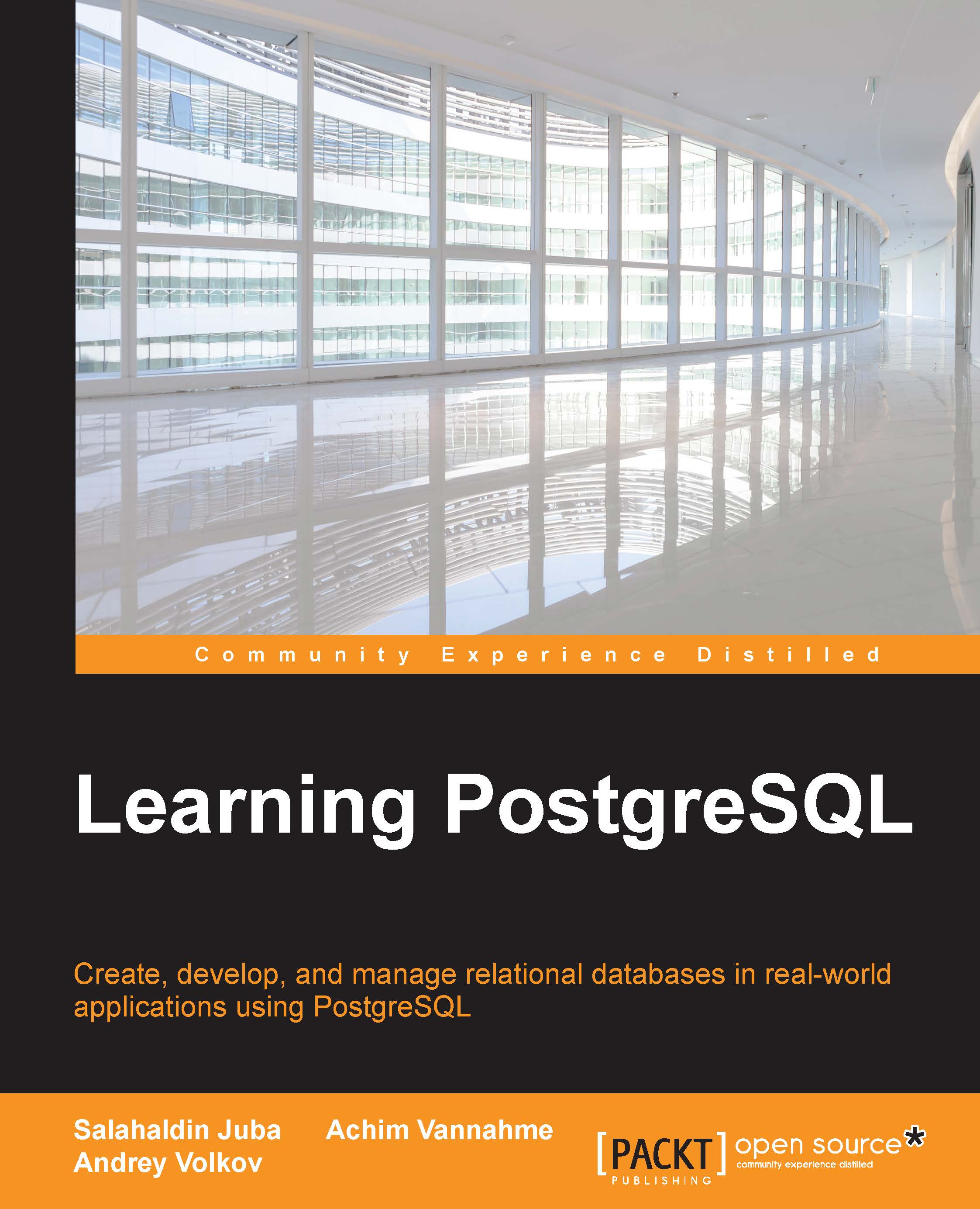-
Book Overview & Buying

-
Table Of Contents

Learning PostgreSQL
By :

Learning PostgreSQL
By:
Overview of this book
 Free Chapter
Free Chapter
 Sign In
Start Free Trial
Sign In
Start Free Trial

 Free Chapter
Free Chapter
A view can be seen as a named query, or as a wrapper around a SELECT statement. Views are essential building blocks of relational databases from the UML modeling perspective; a view can be thought of as a method for a UML class. Views share several advantages over procedures, so the following benefits are shared between views and stored procedures. Views can be used for the following purposes:
Simplifying complex queries and increasing code modularity
Tuning performance by caching the view results for later use
Decreasing the amount of SQL code
Bridging the gap between relational databases and OO languages—especially updatable views
Implementing authorization at the row level by leaving out rows that do not meet a certain predicate
Implementing interfaces and the abstraction layer between high level languages and relational databases
Implementing last minute changes without redeploying the software
Unlike stored procedures, the views dependency tree is maintained in the database; thus, altering...
